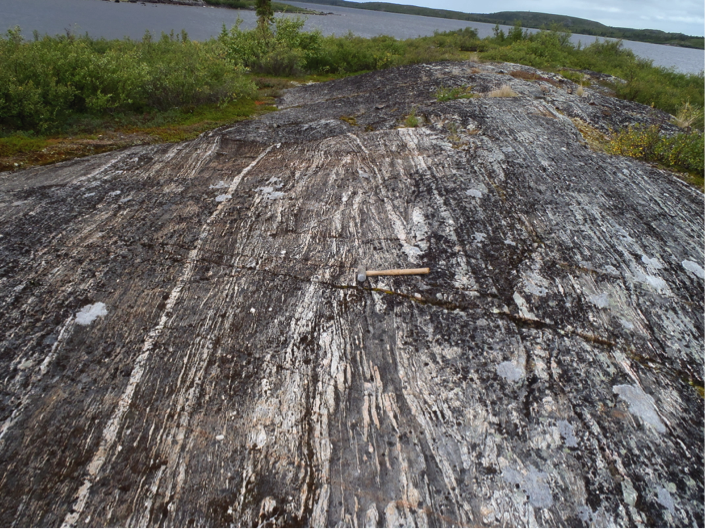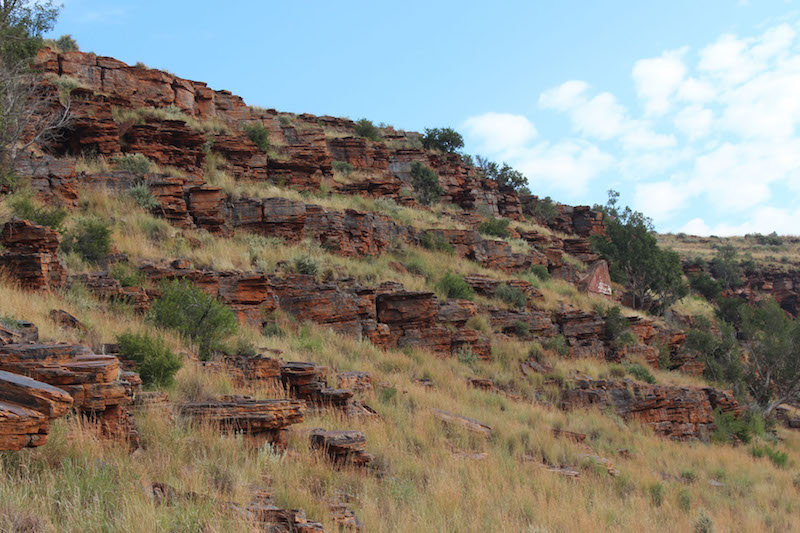High-precision temporal resolution of planetary processes in the Proterozoic and Archean
High-precision geochronology of Proterozoic to Archean zircon needs very thorough application of chemical abrasion techniques to mitigate decay-damage related Pb loss. We have developed stepwise leaching techniques that are controlled by chemical analysis (see Reimink et al., 2016) and are developing a quantitative calibration of the conditions of the partial dissolution step by Raman spectroscopy (Widmann et al., 2019) to characterize and control the degree of decay damage and the efficiency of chemical abrasion.
Application of these techniques enabled highly precise dating of late-stage zircon crystallization in residual melts of the Bushveld Complex (Zeh et al. 2015), showing that zircon crystallization in the >370’000 km3 large Rustenberg Layered Suite lasted for around 1 myr only between 2055.91 ± 0.26 and 2054.89 ± 0.37 Ma. Reimink et al (2016) were able to date precisely Earth’s oldest rock, the Idiwhaa Tonalite gneiss in the Acasta Gneiss Complex (Canada) at 4019.6 ± 1.8 Ma.

Idiwhaa tonalite, Acasta Gneiss Complex, Northwestern territories, Canada
High-precision techniques were also the clue for dating 2.45 to 2.22 Ga old glacial events in the Paleoproterozoic of the Belomorian Belt of northern Karelia, Russia (Zakharov et al. 2017). We have applied high-precision zircon dating to orbitally tuned strata of the Lower Proterozoic Kuruman Banded Iron Formation in S. Africa (Lantink et al., 2019). The cyclostratigraphic analysis revealed that the macrobanding of this BIF is controlled by Milankovitch forcing, more specifically through modulations of the 405 ky eccentricity cycle.

Cyclic sedimentary sequences of Paleoproterozoic age, S. Africa (Lantink et al., 2019)
Lantink M., Davies J., Hilgen F., Mason P. & Schaltegger U. (2019) Climate control on banded iron formations linked to orbital eccentricity. Nature Geoscience, doi.org/10.1038/s41561-019-0332-8
Reimink J.R., Davies J.H.F.L., Chacko T., Stern R.A., Heaman L.M., Pearson D.G., Sarkar C., Schaltegger U. & Creaser R.A. (2016) No evidence for Hadean continents within Earth's oldest evolved rocks. Nature Geosci., 9, 777-780.
Zakharov D.O., Bindeman I.N., Slabunov A.I., Ovtcharova M., Coble M.A., Serebryakov N.S. & Schaltegger U. (2017) Dating the Paleoproterozoic snowball Earth glaciations using contemporaneous subglacial hydrothermal systems. Geology 45, 667-670; doi:10.1130/G38759.1
Zeh A., Ovtcharova M., Wilson A. & Schaltegger U. (2015) The Bushveld Complex was emplaced and cooled in less than one million years - results of geochronology and geotectonic implications. Earth Planet. Sci. Lett. 418, 103-114
Widmann P., Davies J.H.F.L. & Schaltegger U. (2019) Calibrating chemical abrasion: its effects on zircon crystal structure, chemical composition and U-Pb age. Chem. Geol., 511, 1-10, doi.org/10.1016/j.chemgeo.2019.02.02
